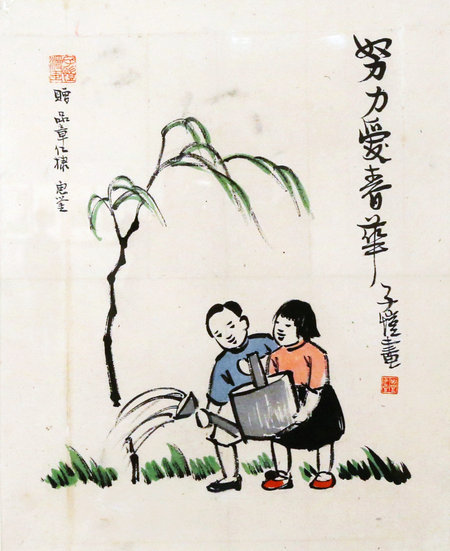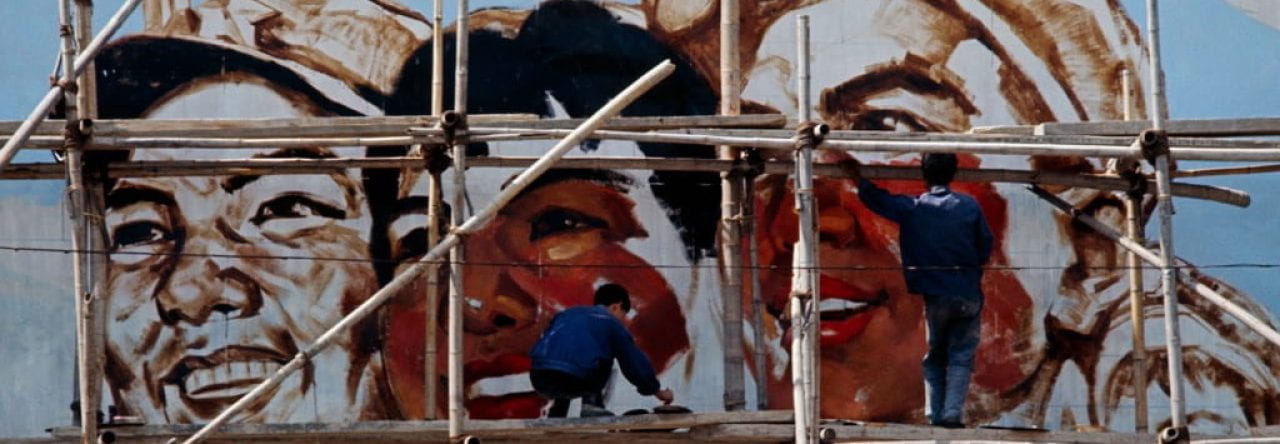
Feng Zikai’s “Valuable Spring (Youth)” is a beautifully composed ink painting on paper. Feng Zikai created lighthearted imagery of youth and children throughout his career from 1898-1975. These images all shared the simplistic but intentionally brushstroke style as seen above. This image was part of a series of many other springtime images where children and youth play and appreciate nature. Feng Zikai, titled the “artist of children” (Laureillard 2014: 47) frequently spoke about the importance of looking at the innocence of children as the proper way to live, stating that “they should be a source of inspiration for a better world.” (Laureillard 2014: 57).
“Valuable Spring (Youth)” utilizes simplistic brushstrokes to create whimsical characters that seem to capture the innocence of children and their view of the world. His caricatures would not hold much detail, but enough to convey the emotions of childlike joy. Feng Zikai depicts a young boy and girl, watering a growing tree with leaves gently blowing in the breeze. His brushstrokes are placed in a way that creates a natural movement that seems to perfectly represent the trees swaying in the breeze. The children are tending and nurturing the growing tree, and are shown to have gentle and upbeat expressions. They are also working together to complete the task of watering the young tree, which ties this image’s story together. There is an innocent connection between the figures, using their strength to enhance the world with nature. This image uses the concept of rebirth and nativity to make a statement about how we as people should be able to connect to nature and our childhood joy.
Feng Zikai had felt that innocence was lost as children grew up, and corruption would take that place. He believed that adults should view the world as a playground, a marvelous world to discover and kindle, just as children do. He also attempts to bring Buddhist ideology into his work instead of heavily political topics. Rather than creating works circling politics, he created works like these to display the meaning of being human. He depicts the connection between nature and humanity, creating imagery that was able to be enjoyed by a vast quantity of Chinese people, and ultimately stays relevant today.
Image source:
https://www.chinadaily.com.cn/a/201810/30/WS5bd7984aa310eff3032854a1_3.html
Bibliography:
Laureillard, Marie. Regret of spring: The child according to Feng Zikai. 2014.
Accessed April 20, 2023. https://hal.science/hal-00983929/document.


Leave a Reply
You must be logged in to post a comment.